As the world continues to grapple with increasing environmental challenges, app developers must seek new sustainable ways to keep building robust software and mobile applications while minimizing our ecological footprint.
We’re already halfway through 2023, and the concerns for the increasing impact of our daily activities on the environment are only getting more…well, concerning. From driving our car to the store to setting our hairstyles with hairspray, everything counts toward further damaging our planet and worsening our ecological footprint. This footprint is getting more extensive and more permanent as we keep underestimating the effect our activities have on global warming, deforestation, and the overall deterioration of our planet. Luckily though, we’ve started making some strides toward becoming greener and more sustainable, a critical goal that seems to have become increasingly important in all industries, including app development.
Sustainability has become a critical component of the conversation about where technology and the environment intersect–and sustainable app development has emerged as an up-and-coming enforcer of innovative solutions to address environmental challenges and contribute to a greener future. However, the concept of sustainable app development isn’t widespread yet, and while smartphones, computers, and mobile and software applications offer unparalleled convenience and innovation, they also have a significant environmental impact. So, as an app development company, we at Foonkie think it’s pivotal to explore the concept of sustainable app development, its potential benefits, and how to enforce it to start creating eco-friendly apps that align with our planet’s sustainability goals. So what better time to start talking about these urgent matters than now?

What is sustainable app development?
Before you start thinking, “Well, what’s the big deal? My smartphone isn’t exactly emitting black clouds of smog”, let us clarify that that’s not what sustainable app development is about. Yes, when we think about high contaminants, our mind doesn’t exactly picture a smartwatch, a tablet, or an iPhone. Instead, it typically goes straight to giant airplanes roaming the skies or big oilers parting waves and spilling oil into our deep blue seas; and you’d be right, of course. However, our everyday devices, while not as powerful as a jet, do pull a lot of power and require electricity to work, which has to come from somewhere. So, while the environmental impact of technology isn’t about your computer spewing radioactive streams of toxic waste into water streams, the truth is that our devices are responsible for adding a good amount of greenhouse gases to the atmosphere, even when we’re not using them. Hence, the importance of sustainable app development.
Sustainable app development is the practice of building and maintaining mobile and software applications while understanding, considering, and taking the necessary steps in the app development process to minimize their environmental impact. These steps rely on not only adopting eco-friendly development strategies and technologies throughout the entire app development life cycle to ensure the resulting product in and of itself is sustainable but also on incentivizing its users to take green actions and use the app responsibly. The goal here is to build durable applications that can stand the test of time but that are also developed responsibly, function properly on minimal device energy consumption, help minimize electronic waste, enhance resource utilization, and overall promote and enforce environmentally responsible practices.
Certainly, software and mobile applications are an integral part of all the most innovative, intelligent IT-based solutions developed in the last years and designed to support digital initiatives to tackle the care of the environment. Environmental engineers, for instance, need software applications to understand, track, and tackle issues such as deforestation and design solutions to help minimize them. However, especially in more recent years, with the proliferation of more powerful technologies and devices, software and mobile apps have started to become part of our rapidly growing carbon footprint instead of the solution they were first supposed to be. Thus, it is important for app development companies to start building software and mobile solutions that not only support global sustainability efforts but are sustainably designed and developed themselves.

How can we enforce sustainable app development?
So now, to the nitty gritty, how can we start shifting towards sustainable app development? Before we begin answering that question, though, we want to be very clear on the following: On their own, software and mobile applications don’t actually contribute to environmental damage. Standalone software does not consume energy, contribute to deforestation, or produce harmful emissions. The issue lies in how we develop software and mobile applications and how our users use them. All the handheld devices and hardware in our homes, offices, and in massive data centers where applications run are the ones responsible for leaving an increasingly concerning carbon footprint. Hence, the relevance of understanding and enforcing sustainable app development initiatives. Here’s how to do it.
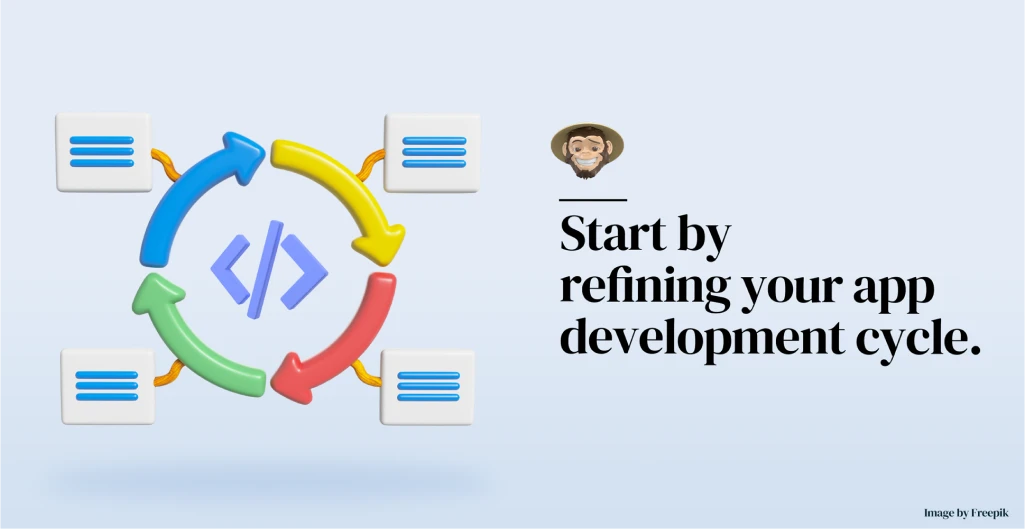
Start by refining your app development cycle.
No matter who you are or what type of apps you develop, we all want the same thing: to consistently deliver the best product. However, in our quest to develop the best possible product, most of us forego the impact our tools, technologies, and practices can have on the environment. For instance, did you know that back in 2019, a group of researchers from the University of Cambridge found that the Bitcoin network consumes more energy than the entire nation of Switzerland? That’s nearly 0.25% of the entire world’s electricity consumption! Sure, Bitcoin and blockchain, in general, have given us countless priceless innovations, but those innovations will remain worth it only if their creators start shifting toward sustainability.
So, on that note, we can say that the first step for shifting toward sustainable app development is assessing, reviewing, and refining your app’s development cycle to ensure it aligns with current environmental considerations. This process involves taking the various stages of your app development process, evaluating them, and trying to identify and assess the key trade-offs you can make and the opportunities for improvement in terms of sustainability. You can start by including this process in your planning stage so you can identify beforehand what is the most negligible environmental impact you can make while building your app the way you want it. In other words, you can start by assessing key trade-offs between your business goals and your development process’ carbon footprint and adjust as you learn.
For instance, you can research the carbon emissions of the tools and platforms you typically use and select the more energy-efficient ones. You can also start identifying which elements you could eliminate from your development process without sacrificing functionality or quality. Some of these elements may include APIs, some programming languages and algorithms, heavy images and videos, or complicated interface elements. Finally, you can start writing more clean and efficient code, optimize your current algorithms, and reduce your app’s computational complexity. Let’s elaborate a bit.
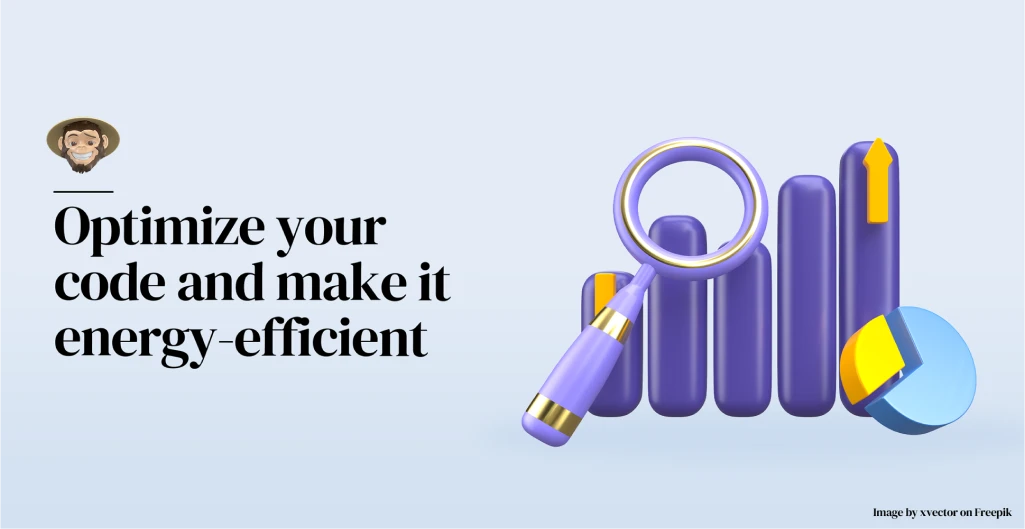
Optimize your code and make it energy-efficient
As we have already learned, energy efficiency plays a pivotal role in any meaningful, environmentally sustainable business initiative, and app development is no exception. One key element that can help you minimize your app’s energy requirements is optimizing your code and ensuring it is as energy-efficient as possible. This step is critical because it is one of the most effective ways of reducing the energy consumption of your apps while also increasing your users’ devices’ battery life and, overall, minimizing the environmental impact of your product.
Optimizing your app’s code means taking the necessary steps to:
- Identify and eliminate any unnecessary, redundant code.
- Use the most efficient algorithms and data structures you can.
- Ensure minimal I/O operations.
- Reduce network requests.
- Optimize code performance by using caching mechanisms, asynchronous operations, and profiling to identify bottlenecks and areas for improvement.
- Minimize CPU usage
- Distribute workload effectively.
These steps, and others, are pivotal to ensure your application’s code is clean and efficient, which will ensure it performs optimally, is highly energy-efficient, and consumes fewer system resources. As a result, your application will occupy less device memory, will not crash or crash less, will handle increasing data volumes without sacrificing performance, will be highly scalable, will use less battery, and will be more maintainable and updatable. All of these benefits of code optimization will result in an energy-efficient, more sustainable application that has a significantly lower environmental impact.
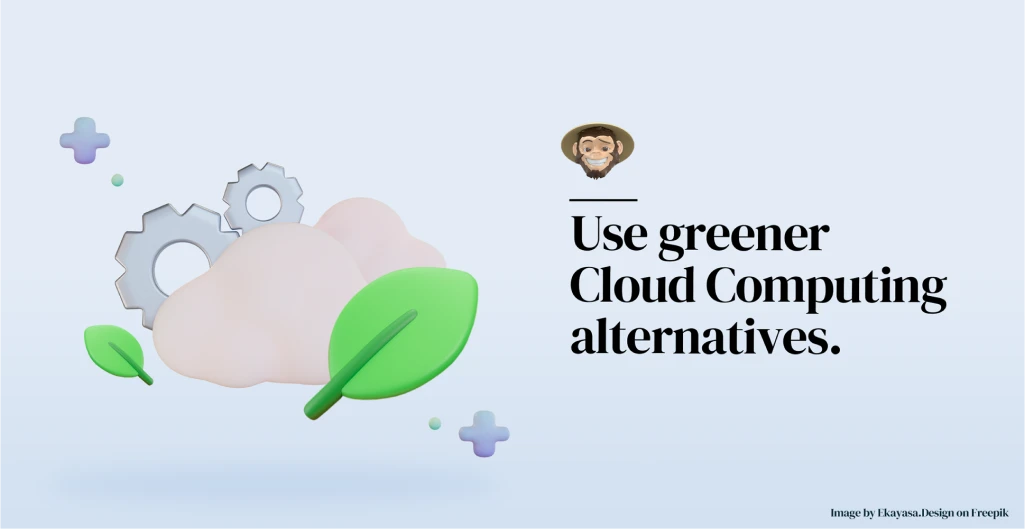
Use greener Cloud Computing alternatives
Yes, cloud computing in app development is nothing new. Most modern applications are already deployed over the cloud and have been for a while, with nearly 75% of tech leaders already turning to it to build all their new IT-based products. At first glance, it seems like cloud computing is an environmentally friendly way of deploying applications. Unfortunately, with the cloud’s rising popularity also comes a growing expansion of highly power-intensive data centers that consume disturbing amounts of energy to power all of the cloud’s undeniable benefits. However, even if it seems like these data centers are a necessary–and unavoidable–evil, you can keep using cloud computing resources but in a more sustainable, environmentally responsible, and energy-efficient way.
Green cloud computing has risen in an effort to make those energy-guzzling data centers more environmentally friendly by optimizing how their servers and other hardware work. This means that energy usage within green cloud computing data centers is reduced by using more efficient cooling systems, implementing better power management techniques, using renewable energy sources, and consolidating hardware and servers. As a result, green cloud computing data centers offer the same benefits as always, but they can operate efficiently on reduced energy consumption and operational costs, which makes them an integral part of any sustainable app development initiative.
So, as you already may know, cloud computing is a great, cost and effort-efficient way of developing and deploying applications, but when implementing sustainable app development strategies, it’s essential you look for a cloud service provider that meets the requirements mentioned above. And more importantly, while hiring a provider that meets these requirements helps address many sustainability problems, you must also implement your own interventions. You must start shifting towards practices such as clean coding, efficient and intelligent data storage and management, containerization, and cross-platform app development (its essential to build apps that are compatible with a wide range of devices and operating systems to allow for extended device use and reduce electronic waste) and minimizing overall energy consumption so that green cloud computing actually does open up new opportunities to reduce your company’s carbon footprint and promote sustainable app development.
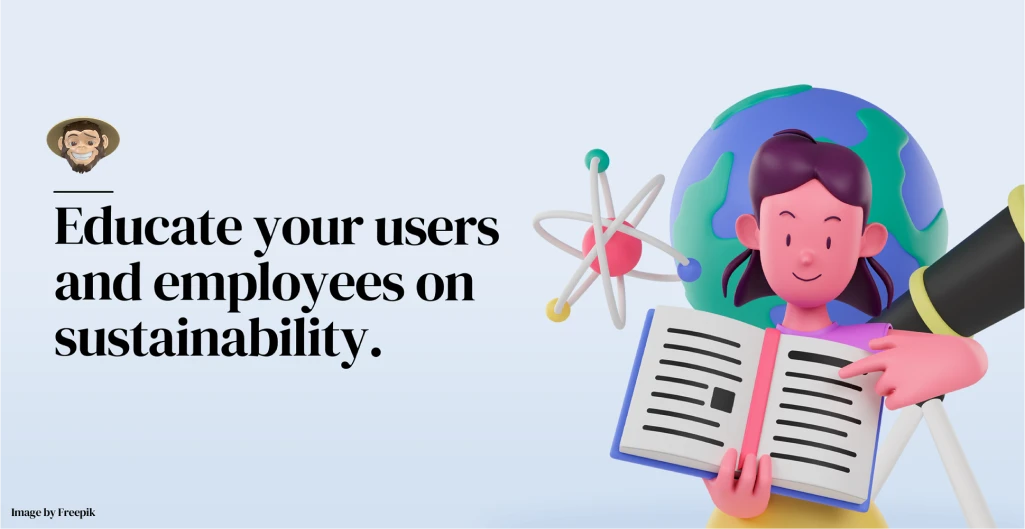
Educate your users and employees on sustainability.
Lastly, while its true that app developers and other enterprises have the lion’s share of the responsibility regarding the sustainability and environmental impact of their products, it is equally important for the users of those products to know how to support those efforts by using them responsibly. In that sense, user awareness and behavior play a crucial role in sustainable app development. So, another way for you to implement sustainable app development practices is to educate and encourage users to adopt environmentally-friendly practices when interacting with your product. Here are some ways you can accomplish that:
Include app features or sections where you can include tips dedicated to educating your users about using your app responsibly, explaining what sustainability is, how to promote eco-friendly practices, conserve energy, reduce electronic waste reduction, and more. Make these tips short, concise, and as unobtrusive as possible so you don’t affect your app’s UX.
You can include track and report features where you reward users for their eco-friendly behaviors. For instance, depending on your app category, you can give them points (or another reward) for walking or cycling to work instead of driving.
Integrate social sharing features in your app where users can share their sustainable achievements and inspire others to follow suit.
You can add reminders or notifications to help users better manage their device’s battery life and provide personalized recommendations for sustainable charging behaviors.
So, since the behavior of your app users can also impact the environment, you must incorporate user awareness and education as an integral part of your sustainable app development strategy so that together, both of you can work hand in hand to create a positive impact on the environment through technology.
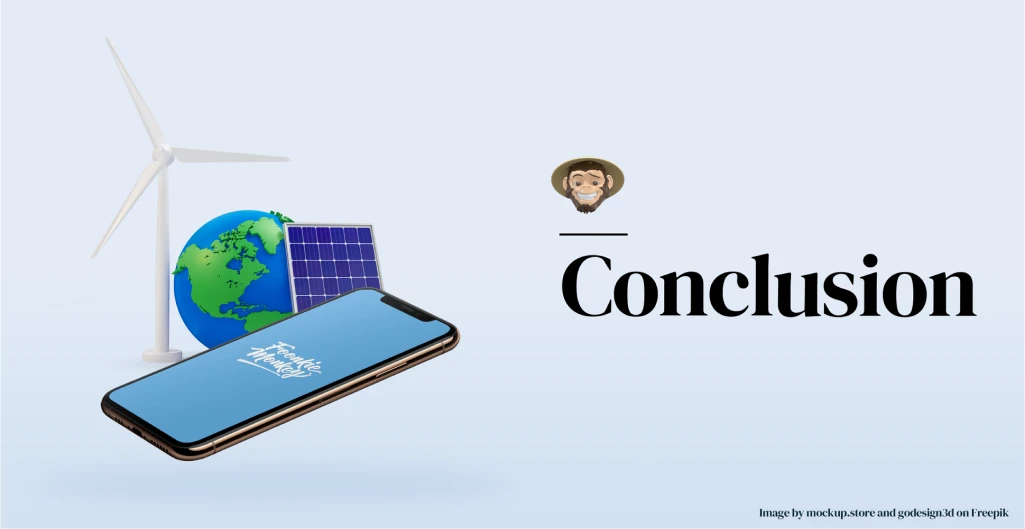
Conclusion
Sustainable app development is a crucial practice for modern app development. It involves marrying traditional app development with eco-friendly practices in a quest to minimize valuable resource consumption, reduce our carbon footprint, promote responsible user behavior, and hopefully save our planet. By implementing and following the principles of sustainable app development we’ve listed in this article and others we may have missed, app developers can start making strides to reduce our carbon footprint, conserve energy, and address environmental challenges. We can create a more sustainable app development landscape through collective efforts and conscious choices. More importantly, though, sustainable app development cannot become just another fleeting trend; it must become the new mindset for app developers across the globe. It must become a commitment to creating digital mobile and software solutions that align with the world’s environmental goals.
At Foonkie Monkey, we always try to keep environmental health at the forefront of all our development practices. So, if you have any questions regarding sustainable app development or want an experienced team like ours to work on your new app, get in touch! We’re more than happy to help!
